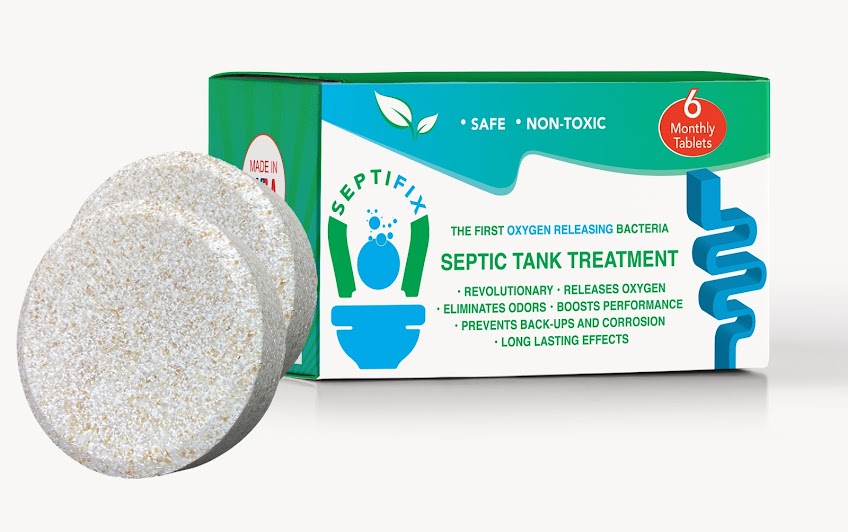Concrete septic tank sizes
Whether you are looking to install a septic tank or want an upgrade, a concrete septic tank is worth considering. There are different types of septic tanks, the most common ones being fiberglass septic tanks, concrete septic tanks, and plastic septic tanks. Each one of them has its own advantages, but the verdict is out that concrete septic tanks are a better choice for most households. Unless you live in a remote area, you should go with a concrete septic tank.
So, what size concrete septic tank do you need? The minimum concrete septic tank for a 2-bedroom house is 1,000 gallons, with 250-500 gallons added for every extra room.
With that said, keep in mind that these are just general guidelines. Several variables determine the size of the septic system you need. Keep on reading to find out what are the main advantages of concrete septic tanks and how do correctly determine the size of the concrete septic tank that you will need.
Call Septic Service Pros 1.855-925-0760 For Service or Request a Quote
What Size Concrete Septic Tank Do I Need?
The first stop for all the wastewater that leaves your home is your septic tank. The wastewater is held in the tank until the solids are separated from the liquids, after which the water filters into the drainage field.
It is important that your concrete septic tank is appropriate for your needs. If the septic tank is too small, it will have a hard time coping with the total volume of wastewater generated by your household. This, in turn, can trigger all sorts of issues such as foul odors, overflowing, and blockage. If the tank is too big, the liquid in the tank might not be sufficient to produce bacteria, which are essential for breaking down of the waste matter.
When picking the right size concrete septic tank, you must take into account four variables. They are:
- Water usage
- Your property’s square footage
- Total number of bedrooms
- Total number of occupants
Water usage
The recommended septic tank sizes based on the total water consumption of a household are:
- A septic tank of 1,000 gallons for water usage of less than 500 gallons per day
- A septic tank of 1,250 gallons for water usage of less than 700 gallons per day
- A septic tank of 1,500 gallons for water usage of less than 900 gallons per day
- A septic tank of 1,900 gallons for water usage of less than 1,240 gallons per day
Size of the property
You can also determine the size of the concrete septic tank you by taking into account the size of your property. Obviously, larger homes need larger septic tanks. For examples, houses smaller than 1,500 sq feet generally need septic tanks that are at least 750-1,000 gallons.
Number of bedrooms
The total number of bedrooms is another factor that you should consider. Generally speaking, the more number of bedrooms a property has, the larger the septic tanks should be. Here are some general recommendations:
- A 750 gallon septic tank is usually appropriate for a 1-2 bedroom house
- A 1,000 gallon septic tank is appropriate for a 3-bedroom property
- A 1,200 gallon septic tank is right for a residential property with 4 bedrooms
- A 1,500 gallon septic tank is suitable for a residential property with 5 to 6 bedrooms
Number of people living in the house
The size of a septic tank goes up and down with the number of occupants living in the house. For example, a house with six occupants will require a bigger septic tank than a property with three occupants.
Get in touch with a professional septic tank service team to find the best concrete septic size for your US home.
Call Septic Service Pros 1.855-925-0760 For Service or Request a Quote
What is a concrete septic tank and why you should consider it?
A concrete septic tank is made from concrete, hence the name. Septic tanks are underground chambers used for collecting and treating wastewater from households. A septic tanks has an opening to allow wastewater from a household that is not connected to the main sewer line enter it. In the other side of the tank, there are several openings to ensure smooth outflow of material. Inside the tank, the solid waste nicely settles at the bottom, while the liquid matter exits through perforated pipes and gets dispersed in the drain field.
Different materials are used for building septic tanks. The most common ones are fiberglass, plastic, and concrete. Compared to others, concrete is used more frequently for building septic tanks, mainly because it can last up to 40 years.
Also, a concrete septic tank is permitted for use anywhere; the same, however, cannot be said about other types of septic tanks, like a plastic septic tank. Some US states do not allow the use of plastic septic tanks. Although heavy to transport and install, septic tanks have a big advantage over others because of its weight. They are less likely to get damaged during installation than fiberglass or plastic tanks, which are much lighter.
Let us now look at the main advantages of concrete septic tanks:
Can be used anywhere
In the US, concrete septic tanks are permitted for use everywhere. In contrast, other tank materials cannot be used in certain areas. For instance, a plastic tank might not be allowed in close proximity of groundwater. Since concrete septic tanks are allowed by all building regulations, irrespective of the location, the permit application for installing a new tank or replacing an old one is usually simpler.
Watertight
Concrete septic tanks are inherently watertight, which means there is a very low risk of leaks.
Require less pumping
The sludge and other waste in a septic tank get decomposed over time. However, if your septic tank gets filled up too soon, bacteria will have hard time breaking down all the solid waste, and consequently you need to pump the tank whenever this happens. Since concrete septic tanks are bigger, they require less pumping.
Last a long time
These tanks are designed to last a long time. With proper care, a concrete septic tank can easily last up to 40 years. In contrast, other types of tanks go kaput after 10-15 years.
Low-risk installation process
Plastic tanks are not as sturdy or durable as concrete ones, and as such can easily get damaged during transportation and installation. If a tank gets damaged, your costs increase. Concrete tanks, in contrast, rarely get damaged during installation (if at all).
Do not collapse during pumping
With a plastic septic tank, there is always a risk that it may collapse during pumping. If that happens, you will have to replace the entire tank. If you have a concrete septic tank, you can rest easy on that score. These tanks do not collapse even when pumped multiple times.
Given the fact that concrete septic tanks have so many advantages, you may well want to install one for managing your household’s wastewater. Even though a concrete septic tank costs more than a plastic or fiberglass tank, its longer lifespan (roughly 40 years) more than makes up for that.










